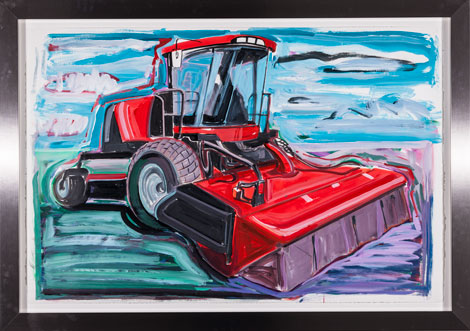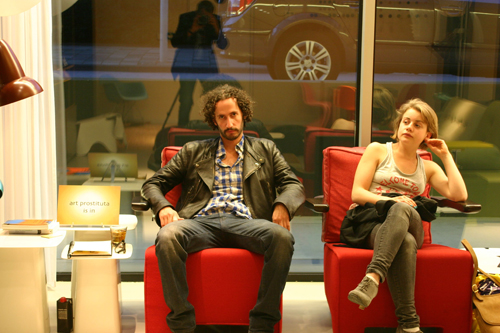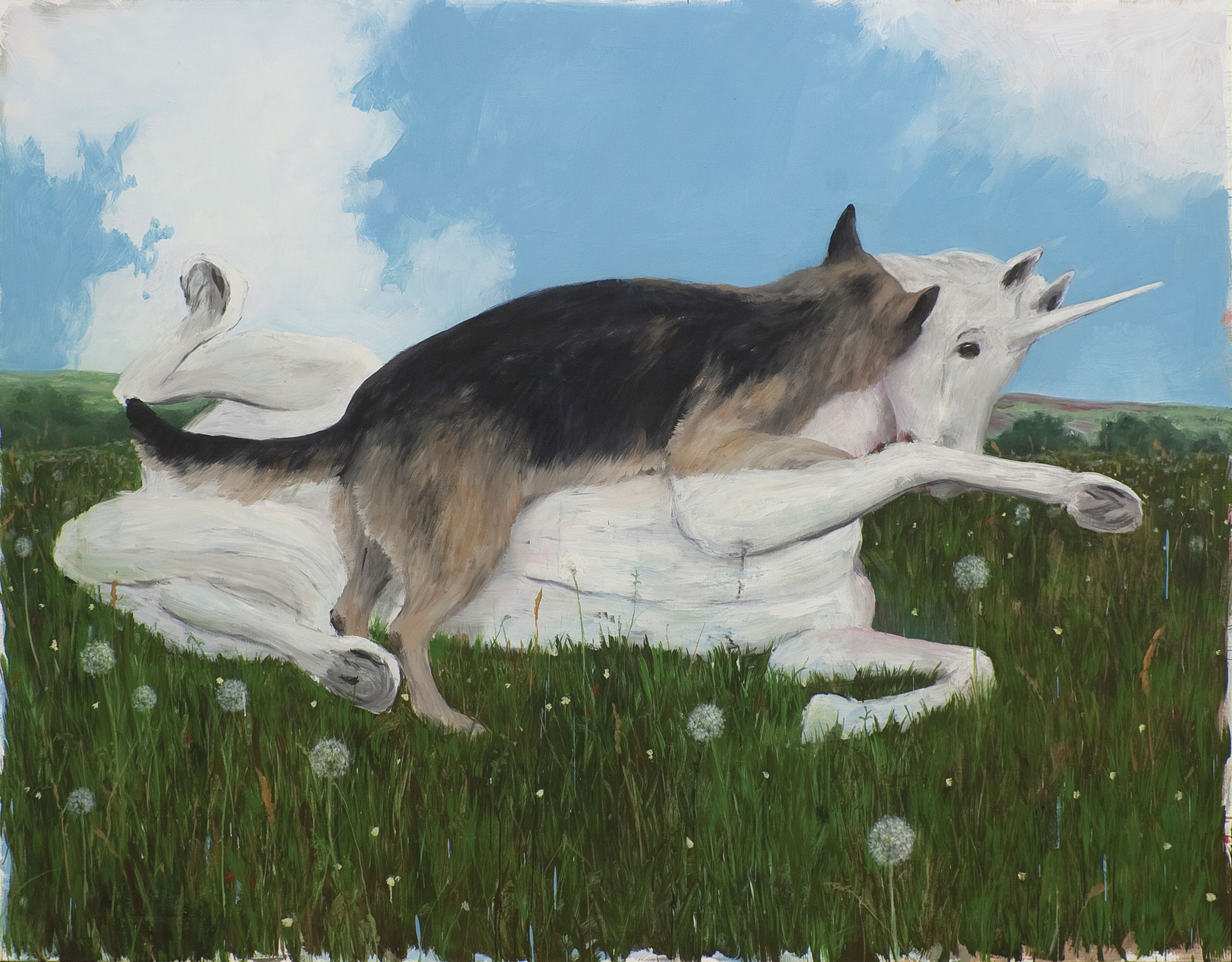Julia Daultat China Art ObjectsJulia Dault’s recent exhibition “Rhythm Nation,” at China Art Objects feels like a trip down memory lane, or more specifically, a journey back through 1980’s color field abstraction where artists like Jack Whitten and David Reed were...
Matt Saunders at Blum & Poe
Matt Saunders at Blum & PoeIn the Hindu language of Sandskrit the word shanti means the perfect calm. Matt Saunders' images bring this kind of quietude to mind, and despite the highly involved technical process by which he makes these evocative and sometimes...
Christopher Russell at Mark Moore Gallery
Christopher Russell at Mark Moore GalleryAs the poet William Butler Yeats wrote in his seminal poem, The Second Coming, “Things fall apart; the center cannot hold.” Christopher Russell understands this concept better than most. His recent exhibition, “GRFALWKV”...
Mike Vegas at West LA College Art Gallery
Mike Vegas at West LA College Art Gallery Simplicity and elegance in form is sometimes difficult to achieve on a large scale, yet Mike Vegas does just that in his new solo show at West LA College art gallery. Working with very basic materials including untreated...
Emily Adams at CB1 Gallery
Emily Adamsat CB1 GalleryThere are some works of art that produce a palpable physical sensation when considered, like scraping your knees along a seemingly never-ending dirt road, or worse, a gravel pit. Emily Adams first exhibition at cb1 succeeds masterfully with...
Reverb at Torrance Art Museum
Reverb at Torrance Art Museum Max Presneill once told me that all rock stars secretly want to be painters and all painters would really rather “get the led out,” and judging from The Torrance Art Museum’s current exhibit, "Reverb," I think I’d have to agree. Bringing...
Platforms & Paint at The Gabba Gallery
Essie Zimm, The Stag with One Eye, 2013 Platforms & Paint at The Gabba Gallery The famous and sometimes infamous painter Joan Mitchell had a particular pet peeve about being called a “Lady Painter.” “So what if the painter happens to be female, why make a big deal...
Miyoshi Barosh: Feel Better at Luis De Jesus
Miyoshi Barosh: Feel Better at Luis De Jesus Imagine a bunch of felines on acid, driving through downtown Los Angeles in a supped up Caddy sipping martinis, purring to Lady GaGa and you’ve acquired just a taste of Miyoshi Barosh’s fantastical and scathing...
Joshua Aster: Innerverse at Edward Cella Gallery
Joshua Aster: Innerverse at Edward Cella Gallery The title of Joshua Aster’s elegant and masterful show, Innerverse, at Edward Cella Gallery expresses both the complexity and lyricism that is at the heart of Aster’s artistic practice. These paintings, all oil on...
B.A.T.
at Offramp Gallery
B.A.T. (Bon à Tirer | Good to Go) at Offramp Gallery Offramp Gallery delivers another strongly engaging and most definitely feminist tour de force that showcases prints by women artists and El Nopal press. The lineup includes artists like Carolyn Castano and Linda...

Karen Carson
Karen Carson has a tremendous sense of humor, as is evidenced in her most recent exhibition at Rosamund Felsen. Having chosen farming equipment—most prominently, tractors—as her subject matter, Carson revels in the sheer monumentality and vibrant colors of these...
Karin Apollinia Muller
at Diane Rosenstein Fine Art
Karin Apollinia Muller: Far Out at Diane Rosenstein Fine Art The natural world, specifically the universe, are living, thriving utopias of abstraction, light and color, and Karin Apollonia Muller has, in her first exhibition at Diane Rosenstein Fine Art, captured both...
Joel Otterson
at Maloney Fine Art
JOEL OTTERSON: Chandelier Queer at Maloney Fine Art The Urban Dictionary defines Chandelier Queer as “an elegant fag. A self-spoiled fruit, “ as though excess of any kind denotes sexual preference, and perhaps chandeliers are a “real red flag,” (still probably not a...
Gregory Michael Hernandez
at Roberts & Tilton
Gregory Michael Hernandez makes maps, composite environments, deliberate negotiations into our collective humanity as a means of locating what appears to be a seemingly and endlessly metaphoric universe. Los Angeles figures prominently here as surrogate muse; the...
Mark Dutcher
at Coagula Curatorial
Every now and again an artist comes along for whom the process of making art is both revolutionary and reverential. Mark Dutcher’s first solo show in almost five years, entitled "Transfer" is a visually transformative experience punctuated throughout as testaments of...
Stephanie Pryor
at Marine Contemporary
It takes nerve to make art with glitter. And to create compelling and uncompromising paintings with sparkles and watered down acrylics is a feat of pure fabulousness. Stephanie Pryor has made it her business to be fabulous in her most recent show at Marine...

PROFILES: Sergio Bromberg
In the 20th century there has long been a long tradition of artists extending their visions beyond the studio walls to encompass a wider range of ideas and modes of thinking, wherein artists like Wallace Berman with his magazine Semina in the ’60s, or much later in...

Enrique Martinez Celaya
Stating that visual art derives from a “poetic impulse” reduces the experience of looking at a particularly seductive or engaging work of art to a passing mystery, some moment of gloriously inexplicable inspiration that is bound to pass. While the work of Enrique...

